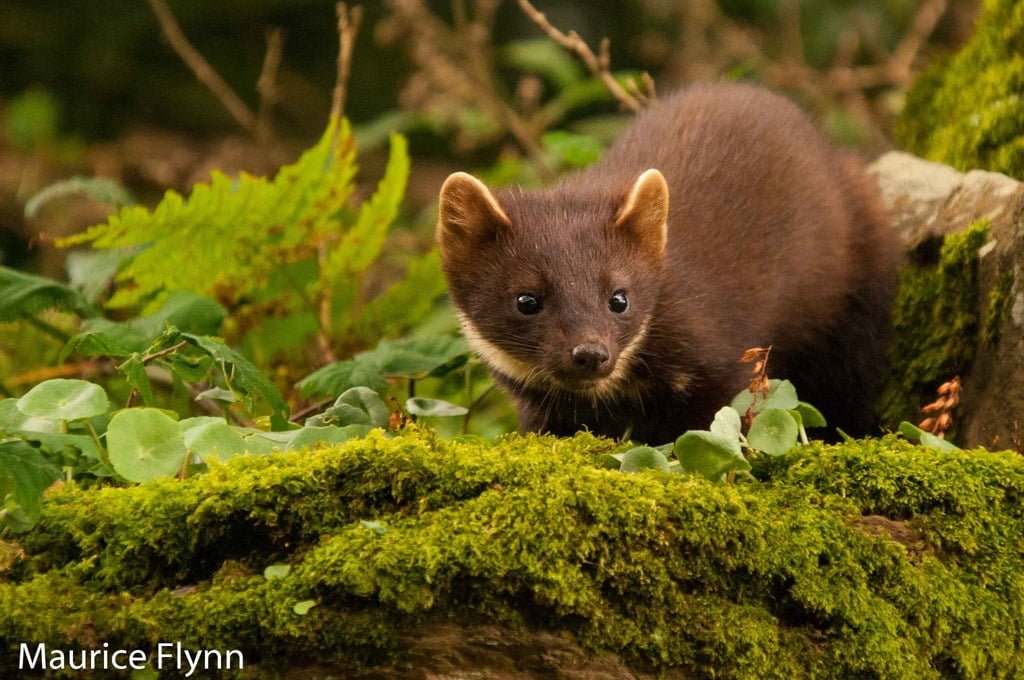
A new study by researchers at NUI Galway and Waterford Institute of Technology shows that populations of the pine marten, one of Ireland’s most elusive mammals, have recovered to healthy levels in areas of the Irish midlands.The research, which will be published in the European Journal of Wildlife Research, used DNA analysis to asses pine marten populations in the midlands and east of the country. Midland populations were found to be at healthy levels, but there are still relatively few pine martens in the east and they are still absent from some parts of Ireland.
“This is likely to be a result of both a lack of competition with other terrestrial mammal species, and the relatively warm winters and lack of seasonality we experience in Ireland, compared with much of the pine marten’s natural range. However, it is important to note that we actually know very little about the true potential of contemporary pine marten numbers in much of Europe, as pine marten populations have been decimated by human impacts historically as a result of hunting, persecution and deforestation.”
Pine martens breed slowly, and are very sensitive to pressures like loss of habitat and persecution. It takes a long time for populations to recover from such declines. Here in Ireland the pine marten has been protected by law since the late seventies, and the population is only reaching healthy levels in parts of the country more than four decades on.
The research team also used DNA analysis to discover what Irish pine martens were feeding on. The most common prey animal was the woodmouse, but perhaps the most interesting discovery was the first evidence of the pine marten preying upon the invasive North American grey squirrel.
“We were particularly interested in how often squirrels feature in the diet of the Irish pine marten population,” says Dr Sheehy.
“The study reveals that the native red squirrel has an extremely low frequency of occurrence in the diet, but in areas that the invasive grey squirrel is still present, it features significantly more frequently than the native red.
“This is likely to be a result of differences in ecology between the red and grey squirrel. Red squirrels are suitably adapted to living with a tree-climbing predator such as the pine marten and indeed they have co-existed successfully in Ireland and Europe over many millennia. In contrast, the grey squirrel, which originates in America, lives in much higher numbers and is less agile than the red squirrel, making it both an easier prey item to catch, and also much more numerically available too,” says Dr Sheehy.
Another interesting discovery was that in areas where pine marten numbers have recovered, such as those in the midlands, grey squirrels are either absent or infrequent, even at sites where they had previously been well established.
Dr Sheehy and Dr Lawton hope to publish further insights on the relationship between red and grey squirrel distribution and pine marten abundance later this year.










5 comments
Muriel
My poultry has been killed by something like a pine marten. Five were killed last week. The head was ripped off one hen and the smallest hen was taken away. Near Straffan, KILDARE
Paul Lynam
I have 3 short videos of a pine marten in my garden 2 days ago in urban area is this usual behaviour
Calvin Jones
Hi Paul,
Pine martens aren’t usually associated with urban areas, although I guess it depends how urban you are, and whereabouts in the country you’re located. In areas holding high densities of marten there’s always the possibility young animals dispersing from nearby forests could pass through “urban” areas.
James mundy
Would pine martin s reduce rabbit population?
Calvin Jones
I don’t really know… but I guess yes and no is the answer. I’m sure pine martens will take rabbits if the opportunity presents itself. However the overlap in terms of habitat choice is going to be limited. Pine martens favour forest and woodland, rabbits, not so much. Where rabbits are living in and around woodland containing martens, then I imagine pine martens could have a local impact on rabbit numbers.
Looking at the bigger picture, if we’re talking about the rabbit population as a whole, then no, I don’t think so.